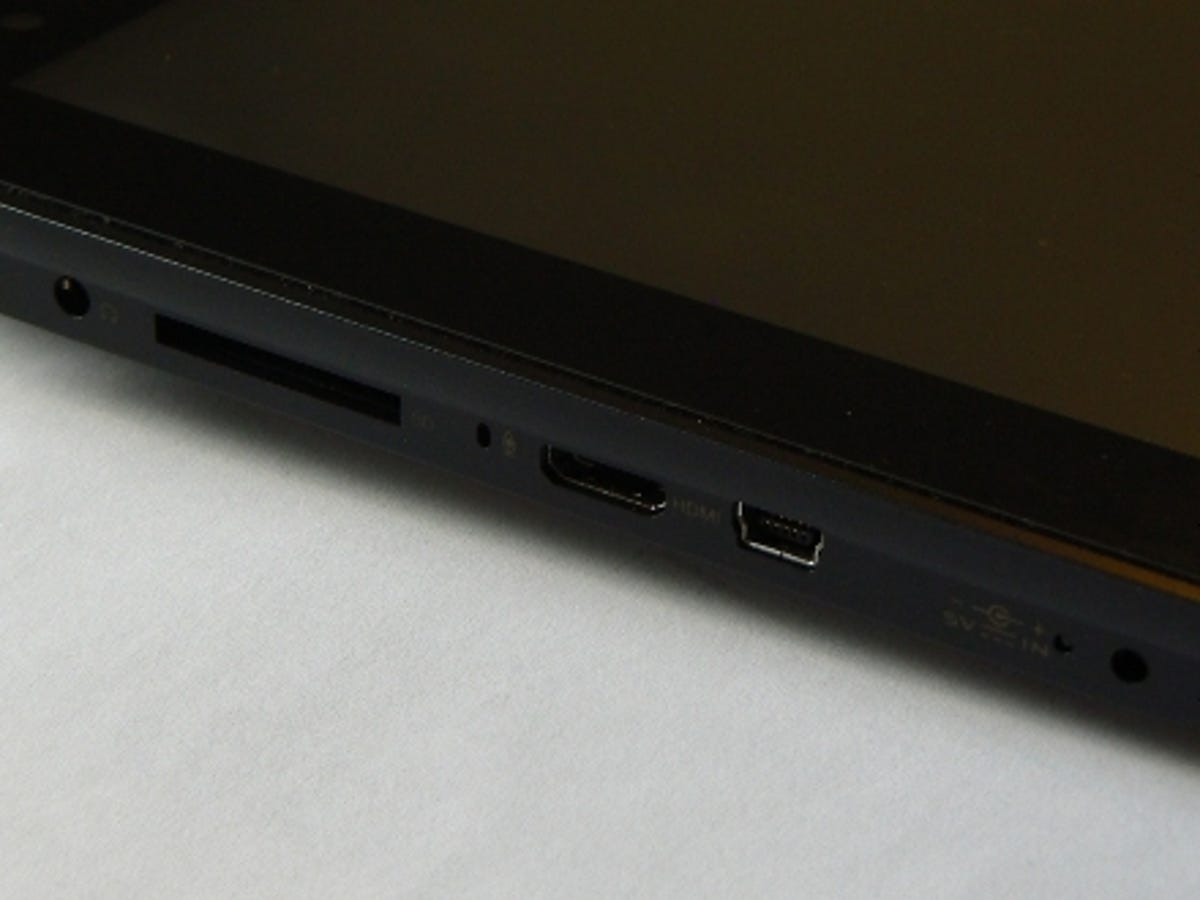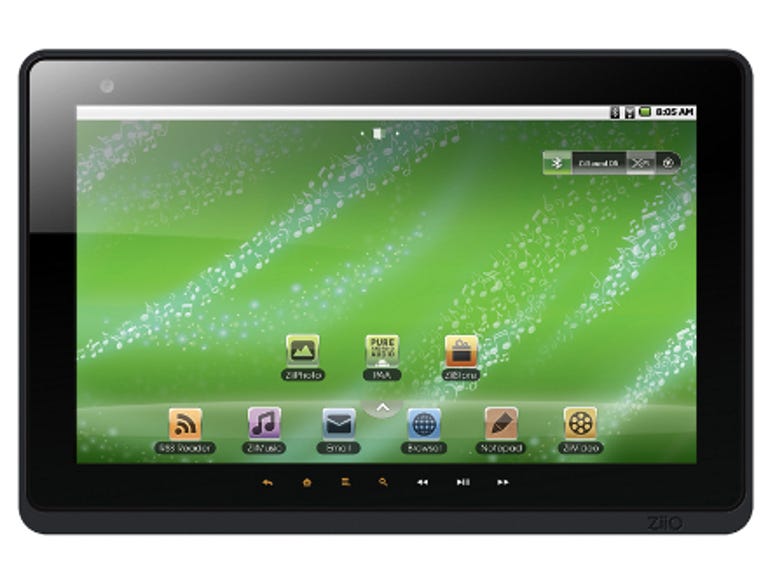 Why You Can Trust CNET
Why You Can Trust CNET Creative ZiiO review: Creative ZiiO
The 10-inch Creative ZiiO Android tablet may be tempting at such a low price, but its uninspiring touchscreen, lack of access to the Android Market, and annoyingly unresponsive touch-sensitive buttons mean it's not much fun to use.
Apple's iPad 2 may be difficult to beat when it comes to all round user-friendliness and performance, but not everyone can afford the £400 asking price of the entry-level model. This is where cheaper tablets come in, such as the 10-inch Creative ZiiO. It runs on Android and aims to give you many of the features of the iPad 2, but for the bargain-basement price of just £200 or so.
The Good
The Bad
The Bottom Line
Design and ports
The ZiiO lacks the premium feel of higher-end tablets, but that's to be expected, and it actually doesn't look too bad. The chassis is made primarily from matte black plastic, with a fairly thick glossy border around the screen.
The ZiiO is relatively slim, at 14mm thick, and feels quite light -- something that certainly wasn't the case with the original iPad. The glossy border houses the four touch-sensitive buttons familiar from other Android devices, along with three controls for music and video playback.
At the top left-hand corner, there's a VGA camera, while the left-hand side houses an SD card slot that lets you expand the built-in 8GB of memory using cards of up to 32GB in size. This edge is also home to a mini-HDMI output, along with a mini-USB port that's used for syncing content with a PC. You can't charge the device over USB though -- instead you have to use the supplied wall adaptor.
The ZiiO offers Wi-Fi connectivity, but doesn't support 3G.
Processor speed
The ZiiO is built around Creative's own ZiiLabs ZMS-08 chip, which in turn is based on an ARM Cortex-A9 design. It's a 1GHz chip with just a single core, so its performance isn't exactly mind-blowing.
Still, the ZiiO doesn't feel too sluggish and it's far quicker than the Archos Arnova 10, for example. Games like Angry Birds play at a decent speed and, as the processor has been tweaked for media playback, it has no problem dealing with hi-def video files.
Android Froyo
The ZiiO runs Android 2.2 Froyo rather than 2.3 Gingerbread, or the tablet-specific 3.0 Honeycomb. Although Froyo supports Flash, the ZiiO actually doesn't.

Creative has heavily customised the Android operating system, adding a bar at the bottom that contains shortcuts to the browser, notepad and ZiiExplorer file browser, as well as the ZiiPhoto, ZiiMusic and ZiiVideo apps. These apps are pleasantly designed, with user interfaces that have been tweaked to look their best on the tablet's display.
Above the dock, there's a clickable arrow that calls up the app drawer. The whole system works reasonably well, but the fact that the Android buttons remain static at the bottom of the device, rather than moving location as you switch from portrait to landscape mode, is something of a design oversight.
No Android Market
Another problem is that you can't access the Android Market. Instead, you have to rely on Creative's ZiiO Space app store, which in reality is just a web interface that allows you to download APK files. It's poorly laid out, difficult to use and not that well stocked.
Resistive touchscreen
The biggest problem with the ZiiO, however, is the touchscreen. The screen's viewing angles are very tight, with the result that, if you tilt it slightly out of the sweet spot, you'll find it really difficult to read text.
The touchscreen also uses resistive rather than capacitive technology, so there's no support for multi-touch zooming, which we really missed, especially in the Web browser. Also, while the display is more sensitive than some other resistive screens we've used, it still feels sluggish when you're used to a good capacitive display. If you own a smart phone, the chances are you'll already be using a capacitive display.
The touch-sensitive buttons mounted beneath the display are also irritating. They're ridiculously contrary, sometimes working without any problems, and sometimes ignoring your input.
Conclusion
While the Creative ZiiO has some good points, its flaws make it difficult to recommend. The lack of support for the Android Market, poor screen and frustrating touch-sensitive buttons are difficult to stomach. The end result is that it's ultimately not much fun to use.
Edited by Charles Kloet


